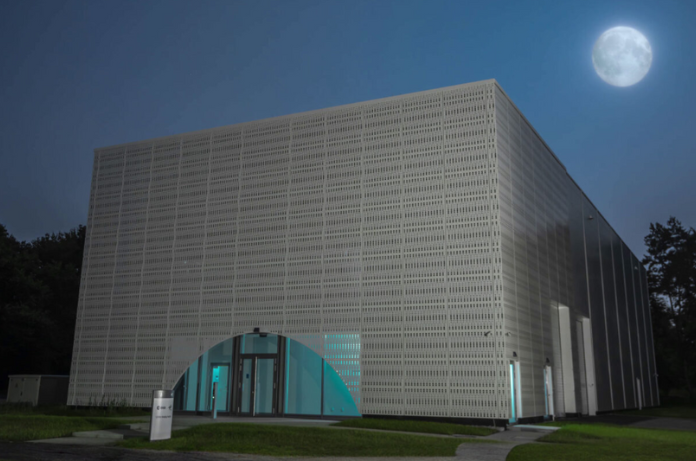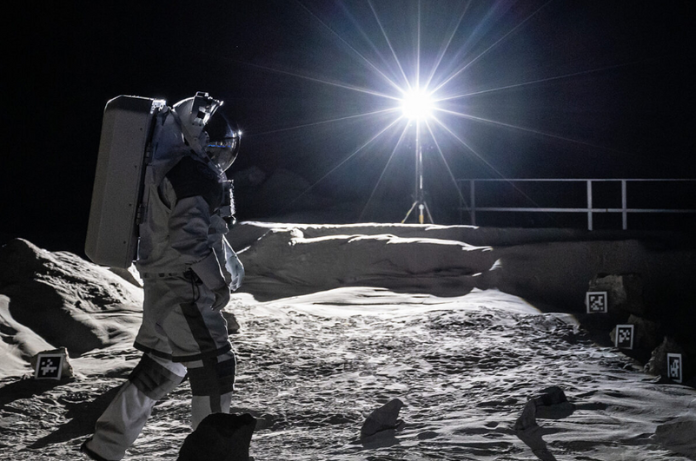The cosmos has always captivated humanity, and with advancements in technology, we’re inching closer to uncovering its secrets. One of the most ambitious projects on the horizon is the LUNA facility in Europe, aiming to create a lunar base with 900 tonnes of volcanic rock. Let’s dive into what the LUNA facility is all about, why it’s important, and how it could shape our future in space exploration.
What is the LUNA Facility?
The LUNA facility stands for “Lunar Research and Innovation” and is designed to simulate the conditions of the Moon. Its primary goal is to develop and test technologies that could support long-term lunar exploration and habitation.

Key facts about LUNA
- Location: Situated in Europe, though the specific country has not been disclosed.
- Purpose: To create a controlled environment that mimics the Moon’s surface and conditions.
- Materials: It will utilize 900 tonnes of volcanic rock, which is critical for understanding the Moon’s geology and potential resources.
- Timeline: Expected to be operational by 2025.
Why volcanic rock?
You might be wondering, why volcanic rock? This material is similar to what scientists believe makes up much of the Moon’s surface.
By using it in the LUNA facility, researchers can:
Study Lunar Geology: Understanding the rock composition helps in learning about the Moon’s history and formation.
Resource Utilization: Volcanic rock can be transformed into useful materials for construction and manufacturing, crucial for sustaining human presence on the Moon.
The Importance of the LUNA Facility
The LUNA facility is not just a scientific endeavor; it’s a crucial stepping stone towards broader lunar exploration.
Here are some reasons why it matters
Testing Ground: It will serve as a testing ground for technologies that could be deployed on the Moon, including habitats, life support systems, and scientific instruments.
International Collaboration: The project promotes collaboration among European nations and with global partners, fostering a shared commitment to space exploration.
Preparation for Mars: The technologies developed here could also be applicable for missions to Mars, as both celestial bodies present similar challenges for human exploration.
The broader context of Lunar exploration
As nations around the world race to explore the Moon, the LUNA facility places Europe in a competitive position. Here are some key developments in lunar exploration globally:
Artemis program (USA): NASA’s initiative aims to return humans to the Moon by 2024, with a focus on sustainable exploration.
Chandrayaan missions (India): India’s space agency has been making significant strides with its lunar missions, exploring the Moon’s South Pole.
Chinese Lunar missions: China has successfully landed rovers on the Moon and is planning further missions to establish a lunar base by the 2030s.
Technological innovations from LUNA
The LUNA facility isn’t just about exploration; it’s also a hub for innovation. Here are some technological advancements we might see emerge from this initiative:
Regolith Utilization: Techniques to utilize lunar soil for construction and agriculture, essential for long-term habitation.
Life Support Systems: Development of sustainable life support systems that recycle air, water, and waste.
Robotics and Automation: Testing robotic systems for building infrastructure on the Moon without human presence.
Environmental considerations
As we look to the Moon, we must also consider the environmental impacts of our endeavors. The LUNA facility will prioritize sustainable practices, ensuring that we learn from past mistakes on Earth. Key aspects include:
Resource Management: Efficient use of resources to minimize waste and environmental disruption.
Sustainable Technologies: Focusing on renewable energy sources, like solar power, for operations.
Resources like water ice, and the feasibility of in-situ resource utilization (ISRU). Researchers will explore methods to extract oxygen and other essential materials from lunar regoliths, paving the way for sustainable human presence on the Moon.
Educational opportunities
The LUNA facility also presents exciting educational prospects. By involving universities and research institutions, it will inspire the next generation of scientists and engineers. Students and researchers will have the chance to participate in experiments, learn about space technologies, and contribute to groundbreaking discoveries that could influence future lunar missions.
The LUNA facility is not only a hub for groundbreaking research and technology development but also an exceptional platform for educational engagement. As Europe positions itself at the forefront of lunar exploration, it opens a myriad of opportunities for students, educators, and aspiring scientists.
Hands-on learning experiences
One of the standout features of the LUNA facility is its commitment to providing hands-on learning experiences. Universities and research institutions across Europe will have the chance to collaborate directly with the facility, allowing students to participate in real-world projects. This hands-on approach is invaluable; it bridges the gap between theoretical knowledge and practical application, enhancing students’ understanding of aerospace engineering, geology, and environmental science.
Internships and Research Programs
The LUNA facility is expected to offer internship programs for students in various fields, including engineering, planetary science, and robotics. These internships will provide invaluable experience and foster skills that are highly sought after in the aerospace industry. Participants will work alongside experienced researchers and engineers, gaining insights into cutting-edge technologies and research methodologies.
Additionally, dedicated research programs can be established for graduate students and early-career researchers, enabling them to contribute to projects related to lunar geology, habitat design, and life support systems. This experience could significantly enhance their academic profiles and career prospects.
Outreach and public engagement
Beyond direct student involvement, the LUNA facility aims to inspire a broader audience through outreach initiatives. Educational workshops, public lectures, and interactive exhibits will be organized to engage the community and ignite interest in space exploration. These programs will showcase the importance of lunar research and its implications for future human settlement on the Moon, fostering a sense of wonder and curiosity among younger generations.
Online learning platforms
In the digital age, online learning has become increasingly important. The LUNA facility could develop online courses and webinars covering various aspects of lunar science and technology. These resources would be accessible to anyone interested, democratizing knowledge and inspiring future generations of scientists, engineers, and space enthusiasts.
By investing in education and outreach, the LUNA facility not only prepares the next generation of explorers but also cultivates a culture of curiosity and innovation. This focus on education ensures that the advancements made in lunar research will have a lasting impact, inspiring future discoveries and igniting a passion for space exploration in people around the world.
Environmental Considerations
As we look to the Moon, we must also consider the environmental impacts of our endeavors. The LUNA facility will prioritize sustainable practices, ensuring that we learn from past mistakes on Earth. Key aspects include:
Resource Management: Efficient use of resources to minimize waste and environmental disruption.
Sustainable Technologies: Focusing on renewable energy sources, like solar power, for operations.
The future awaits
The LUNA facility is an exciting leap forward in our quest for knowledge and exploration. With its ambitious goals and the potential for groundbreaking innovations, Europe is making significant strides in the field of lunar research. This project is not just about reaching for the stars; it’s about ensuring that when we get there, we can thrive.

